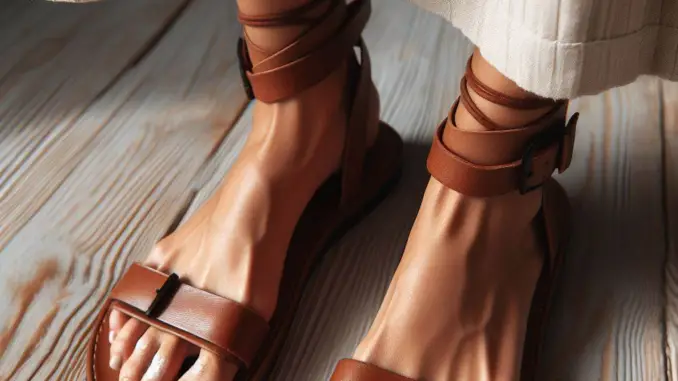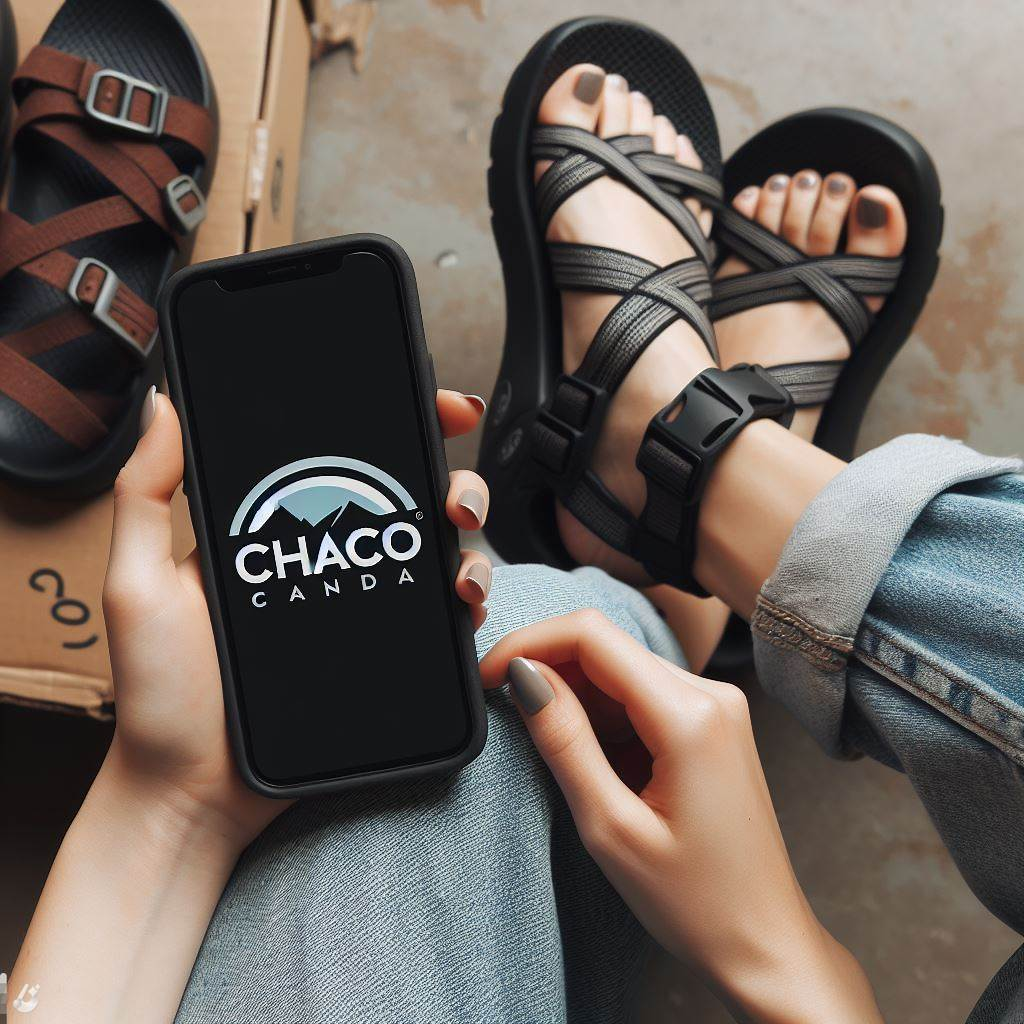
How tight should sandal straps be?
My friends, when the warm weather rolls around each year, I don’t know about you, but I get pumped for sandal season. However, every year it seems I run into the same issue – how tight should my sexy sandal straps be for peak comfort and style? Too tight, and I’m hobbling around after an hour, too loose, and I’m flopping all over the place like an injured duck. Clearly, there’s an art to finding that sweet spot for sandal strap snugness. So this year, I decided to do some research on the sandal straps conundrum to spare my feet and help my pals. Read on for essential intel to take your sandals from meh to marvelous!
Understanding Sandal Fit: More Than Just Shoe Size

I used to think finding well-fitting sandals was as simple as knowing my shoe size, but oh how wrong I was, friends. It turns out there’s a whole science behind sandal structure and strap integration to create a heavenly foot-hugging experience. Firstly, an ideal sandal fit is about considering the length and width of your foot, as well as your arch type. The shoe professionals (I call them the Shoe Whisperers) say a good sandal fit ensures your heel sits right at the back edge of the sole, with about a thumb’s width of space between your longest toe and the front. This helps prevent squashed piggies or loosey-goosey flopping as you walk.
As for width, the sandal should match the width of your foot so you don’t experience that dreaded side-squish situation. And don’t forget arch support – whether you have high Fitbit-reaching arches or pancake-flat feet, the arch support in your sandals should align properly for maximum comfort. It’s a delicate foot-to-sandal tango, but with some know-how, you can find your dream sandals to two-step through summer in style.
Strap Tightness: A Delicate Balance
When it comes to sandal strap tightness, it seems people fall into two camps – Team Snug as a Hug and Team Loosey-Goosey. As a card-carrying member of Team Snug for years, I always cranked my sandal straps as tight as possible for a secure fit. But after getting brutal blisters last summer that rendered flip-flop season useless, I learned strap tightness requires finding a delicate balance. The goal is to avoid too tight, which can cause painful blisters, calluses, and abrasions. But also not so loose that you’re flopping around like one of those inflatable tube people at car dealerships, risking injury.
The material of your straps impacts the equation as well. Leather and plastic straps tend to stretch over time, for example, so they may fit differently six months down the road versus day one right out of the box. It takes some finessing, but don’t worry – with a few simple tips, you’ll be rocking straps snug as a hug yet comfy as an old t-shirt.
- Benefits of Properly Tightened Straps: Secure fit to prevent slippin’ and slidingin’, better arch support, improved posture, enhanced spinal alignment, and wicked awesome balance so you don’t faceplant off curbs. Safety first, friends!
- Disadvantages of Overly Tight Straps: Discomfort to turn even the most zen person into the Hulk, potential for long-term foot damage turning you into ol’ Hobblefoot before your time, and problems like painful bunions that’ll have you crying in your flip flops.
Finding the Right Strap Type for Your Style Needs
Okay, so strap tightness is critical, but did you know the type of sandal strap also defines both how fly your sandal style is…and how comfy said flyness shall feel on your feet? From classic leather to gladiator-style wraps going halfway up your calf, sandal straps come in endless varieties, each with their own vibe. When selecting your perfect strap type, consider your specific needs and foot model. Got bunions that need breathing room? Steer clear of restrictive gladiator straps that squeeze like an anaconda. Have narrow heels that slip out of basic straps? Look for an ankle cuff style to lock them puppies in place.
How to Adjust Those Straps Like a Pro
Getting your sandal straps adjusted just-so for your foot is easier than that hangover-curing breakfast sandwich you’ll crave come Sunday. Simply loosen those straps so they’re fully open and floppy. Slip your foot in so it’s resting all cozy-like in the sando bed. Now begin tightening the straps, pulling to your desired tension without going full Tourniquet Town. Secure the straps through the buckle, give them a gentle final tug, and booyah – straps tightened for prime wearable comfort!
How Badly Fitted Sandals Can Damage Your Feet
I used to think ill-fitting sandals were just a minor nuisance giving me the occasional blister or callus. Boy was I wrong! Improper sandal fit can cause way more than just surface-level ouchies – we’re talking chronic pain, plantar fasciitis, bunions, hammertoes… no thanks! Even mild irritation from poor sandal fit can alter how your foot hits the ground, changing your gait and posture over time. Yikes! No one wants to be hobbling around town like Quasimodo in ineffective footwear.
To avoid sandal-induced foot injuries, heed this veteran advice when selecting your next pair of strappy summer shoes:
- Try sandals on at night when your feet are puffed to their maximal size after a long day in high heels that killed your arches but looked fab.
- If you wear those weird toe socks or fancy custom orthotics in your sandals, put them on during test drives of new pairs.
- Take your potential new sandals for a test walk outside the store. Check for pinching, rubbing, or heel slippage that could signal future foot damage.
Look, optimum sandal fit balances comfort, and support and makes your legs look amazing. Keep these key elements aligned and you’ll be rocking cute sandals from beach parties to weddings all summer long!
Picking Sandals for Different Foot Types
Feet comes in more shapes than pasta at Olive Garden – no two are exactly the same! So when picking sandals, consider your personal foot model and type before falling for a flashy pair that turns out to be an instrumentation of torture. Got flat feet? Seek out shoes with proper arch reinforcement so you don’t overpronate and put stress on your knees and back. High arches? Scope out sandals with cushioned footbeds to support your high-maintenance feet.
If you have wide feet, ensure any sandal has a roomy toe box for toe-spreading galore without restriction. Understanding your foot type and picking a sandal specifically designed for it will have you beach-bopping in comfort, not limping around with ice packs strapped to your sausage toes because those gladiator sandals squeezed too hard.
Strap Material Matters
When evaluating sandal strap materials, consider factors like durability, comfort, and of course, style. Leather straps tend to soften and conform to the exact shape of your feet over time for a customized fit. But fabric straps offer immediate softness right off the bat while being easier on the wallet. However, they likely won’t last multiple summers like leather will. Think about how often and where you’ll wear your new kicks to choose the right strap material for your needs.
And if bling’s your thing, strappy sandals come adorned with everything from rhinestones to metallic finishes these days. Just ensure fashion takes the backseat to functionality so you avoid hobbling out of the club after dancing for hours in chic but torturous stilettos!
Sizing and Fit Tips for Sandal Success
While camping somewhere in the vast Sahara desert last summer (long story), I made the grave error of purchasing a locally handmade pair of leather sandals a size too small. With no shops for miles and miles, I was forced to road warrior it in those suckers for two weeks straight under the blazing sun. We’re talking average temps of 105 degrees – my feet were NOT having it, friends.
By day three, I had blisters on top of blisters and had to fashion some makeshift moleskin padding to ease the rub. But the damage was done – those sandals rubbed my heels raw, and with all that sweat and friction, I battled funky infections from back home that took weeks to recover from. So, trust me when I say getting your sandal size right is critical!
Shoes that are too big can be equally problematic, allowing your foot to slide around and increasing injury risk dangerously. And sandals too small constrict your feet, cutting off circulation and causing discomfort which can lead to gnarly blisters. What is the moral of the story? Size up if between sizes to allow a little extra wiggle room for your piggies. Also, shop for new sandals at the end of day when swelling elongates your feet. This ensures maximum comfort down the line.
Special Considerations for Kids and Older Feet
Selecting quality sandals for kids and the elderly requires some special care. Children’s feet grow quicker than weeds, so allow ample room for growth when shoe shopping for your tiny humans. Secure straps are also key to prevent trips and falls as kids bolt around the playground. For aging feet, prioritize sandals with sturdy, non-slip soles and easy-to-adjust straps to accommodate swelling or arthritis. Proper fit prevents accidents!
Caring for Your Sandals Like a Pro
Listen, replacing beaten up sandals every few months is rough on both your feet AND your wallet. With some basic TLC though, you can extend their lifespan significantly. I like to clean my sandal straps once a week with mild soap and water to banish odor and funky grime, then apply a leather conditioner to keep the straps supple. At the end of the season, store your sandals away from direct sunlight and extreme temps to avoid cracking, warping, or color changes. A few minutes of sandal care goes far!
Knowing When to Retire Your Trusty Sandals
But even with diligent care, every pair of sandals has an expiry date. Keep an eye out for things like overstretched-out straps that leave your feet loosey-goosey unstable, worn-out soles with no traction, breakage that exposes your feet to the elements, or simply lack of structural support and comfort. As soon your sandals compromise either foot health or style season after season, it’s time to honor their service and upgrade to something new!
Striking the Balance of Fashion Meets Function
Ladies and gentlemen, as we’ve covered, I certainly love a stylish sandal as much as the next gal. However, fashion can never come at the cost of foot health and happiness! Thankfully, today, there exist so many cute options also delivering on the comfort front. From arch-supported gladiators to snazzy FitFlops, you truly can have it all in modern times – hip style fused with happiness-promoting function. Just beware of prioritizing the Instagrammable nature of certain sandals over their wearability. Your feet will thank you!
Expert Tips for Sandal Shopping Victory
When seeking your next seasonal sandals, consider booking an appointment with your local podiatrist, especially if you have existing foot issues like bunions or plantar fasciitis. These docs can recommend specific sandal characteristics that contour to your unique feet best. Beyond their wisdom, perusing reviews and trying on multiple pairs at the store helps nail down an ideal fit. The right sandals should feel fabulous from the first step, supporting your foot model and lifestyle with ease and joy. Follow these veteran tips, and you’ll be rocking cute, comfy sandals for seasons to come.


Leave a Reply